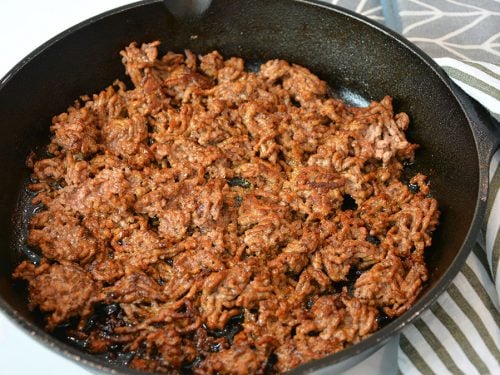
How to Know When Hamburger Meat Is Done: A Comprehensive Guide
Hamburger meat, a staple in kitchens worldwide, is a versatile ingredient that can be transformed into mouthwatering burgers, meatballs, tacos, and more. However, achieving the perfect doneness is crucial for ensuring both safety and an optimal taste experience. This guide will provide you with a thorough understanding of how to determine when hamburger meat is done, ensuring delectable results every time.
Understanding USDA Guidelines
The United States Department of Agriculture (USDA) recommends cooking ground beef to an internal temperature of 160°F (71°C) to eliminate harmful bacteria like Salmonella and E. coli. This is considered the safe minimum internal temperature for all ground beef products, including hamburger meat.
Methods for Checking Doneness
1. Meat Thermometer:
This is the most precise method for determining the internal temperature of hamburger meat. Insert the probe of a meat thermometer into the thickest part of the patty, avoiding touching any bones or cartilage. Cook until the thermometer reads 160°F (71°C).
2. Touch Test:
While less precise than a thermometer, the touch test can provide a general idea of the doneness of your hamburger meat. Using tongs or a fork, press down on the patty. The following assessments can guide you:
- Raw: Patty will feel very soft and squishy, with no resistance.
- Rare: Patty will feel slightly soft, with a little resistance.
- Medium-rare: Patty will feel more firm, with noticeable resistance.
- Medium: Patty will feel firm, with some give when pressed.
- Medium-well: Patty will feel firm and springy, with minimal give.
- Well-done: Patty will feel hard and springy, with no give.
Factors Affecting Cooking Time
Several factors can impact the cooking time of hamburger meat:
- Thickness: Thicker patties take longer to cook than thinner ones.
- Size: Larger patties take longer to cook than smaller ones.
- Fat Content: Meat with a higher fat content cooks faster than meat with a lower fat content.
- Cooking Method: Grilling, pan-frying, and baking can all yield different cooking times.
Tips for Perfectly Cooked Hamburger Meat
- Season liberally: Season your hamburger meat with salt, pepper, and your favorite herbs and spices before cooking for enhanced flavor.
- Form patties gently: Avoid overworking the meat as this can result in tough burgers.
- Preheat your cooking surface: Whether grilling or pan-frying, it’s essential to heat your cooking surface to a high temperature before adding the patties.
- Flip regularly: For even cooking, flip the patties every 3-4 minutes.
- Cook to your desired doneness: Refer to the USDA guidelines or the touch test to achieve your preferred level of doneness.
- Let rest before serving: Allow cooked patties to rest for 5-10 minutes before serving to redistribute juices and enhance tenderness.
Troubleshooting
- Undercooked meat: If your meat is undercooked, continue cooking until the internal temperature reaches 160°F (71°C).
- Overcooked meat: If your meat is overcooked, the texture will be tough and dry. Avoid cooking to a higher temperature than necessary.
- Burnt meat: If your meat is burnt, discard it and start again. Overcooked meat can be harmful to consume.
FAQ
1. Is it safe to eat slightly pink hamburger meat?
No, it is not safe to consume pink hamburger meat. The USDA recommends cooking ground beef to an internal temperature of 160°F (71°C) to eliminate harmful bacteria.
2. Can I cook hamburger meat from frozen?
Yes, you can cook hamburger meat from frozen. Expect a longer cooking time, and ensure the internal temperature reaches 160°F (71°C).
3. How can I prevent my hamburger meat from shrinking?
Adding breadcrumbs or soaked oatmeal to your hamburger meat mixture can help retain moisture and minimize shrinkage.
4. What is the ideal fat content for hamburger meat?
For flavorful and juicy burgers, aim for a fat content between 15-20%.
5. What are some alternative ingredients to add to hamburger meat?
Experiment with adding chopped onion, bread crumbs, grated cheese, or herbs to enhance the flavor and texture of your hamburger meat.
Conclusion
Knowing when hamburger meat is done ensures safe and delectable meals. By following these guidelines and adopting the tips provided, you can consistently achieve perfectly cooked hamburger meat that will tantalize your taste buds and delight your family and friends.

Image: nyssaskitchen.com

Image: savoryexperiments.com
Home Foodie – So… we MEAT again. Nutritious… | Facebook Jan 23, 20241. Use a Meat Thermometer. Pictured Recipe: Tomahawk Cowboy Steak. When you are using a digital thermometer to check for doneness, insert the meat thermometer into the thickest part of the meat. If you’re cooking meat on the bone, make sure the thermometer isn’t touching the bone—it’s a conductor of heat and could give you a false reading